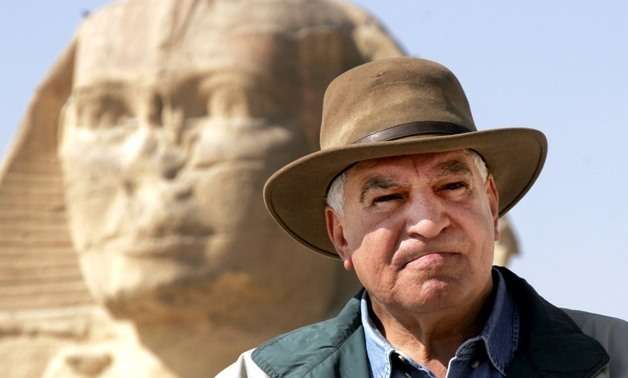Researcher Dr. Nayef bin Ali Al-Qunour has drawn important conclusions that indicate the strategic and cultural importance of the history of the Arabian Peninsula. He suggested that the Arabian Peninsula contains cultural, historical and artistic progress that goes back thousands of years and extends to prehistoric times.
The drawings that were found on the rocks confirmed that humans who lived in the Arabian Peninsula had left to the current generation a cultural and artistic legacy by which they expressed themselves and their community, and that there was a state of communication and contact with the neighboring cultural centers.
The researcher also added that the drawings indicated that humans in the Arabian were not isolated from their neighbors, and also were engaged in several commercial relations in that period.
The researcher spoke about the ceremonial rituals, the adornment tools and the clothes, whether the early humans used in their normal life, in hunting activities or when practicing a social or religious ritual.
Al-Qanour mentioned five types of clothing: the clothing of deities, special occasions, hunting, the clothing of the ordinary people, and the clothing of women. The clothes were designed from leather, plants, tree leaves, wool and linen.
He added that there were several ways for making clothes, namely tanning, spinning and weaving, noting that people of this era had used dyes to color clothes, and adornment tools such as necklaces and anklets were also used.
The people of the early era in the Arabian Peninsula were able to depict a complete picture of the celebrations that were taking place and clarify the relationship between art and society, whether social or religious celebrations.
During these celebrations, people in the Arabian Peninsula knew how to perform bilateral and group dancing.
The drawings also showed that no musical instruments were found except in a scene of a group of women carrying and beating drums. The people of that early age relied on hunting, agriculture, grazing, industry and trade.
He also found that the people there were famous for palm cultivation. Cereals and dates were important crops for living and possibly commercial development, both inside and outside the Arabian Peninsula. Trade was based on the process of bartering goods and products among other groups to meet their needs.
The researcher also touched on the religious conditions that prevailed in that early era, as there was a persified religious activity in thought and belief, so worship focused on the sanctification of deities of human forms, as well as the sun.
The early inhabitants of the Arabian Peninsula made sacrifices of cows, goats and bulls for deities that appeared in human forms without hands, legs and details of facial features, while other forms of deities appeared in human form with a bird's head and beak.
Al-Qanour believed that the people of this era adopted this method to give a touch of prestige to his deities.
Such important research revealed the extent of artistic and civilizational creativity of the Arabian Peninsula, and the need to announce that the early eras of humans on the Arabian Peninsula showed their progress and their artistic, religious, economic and industrial culture.
Translated by Hassanain Tayea













